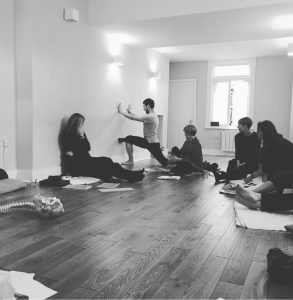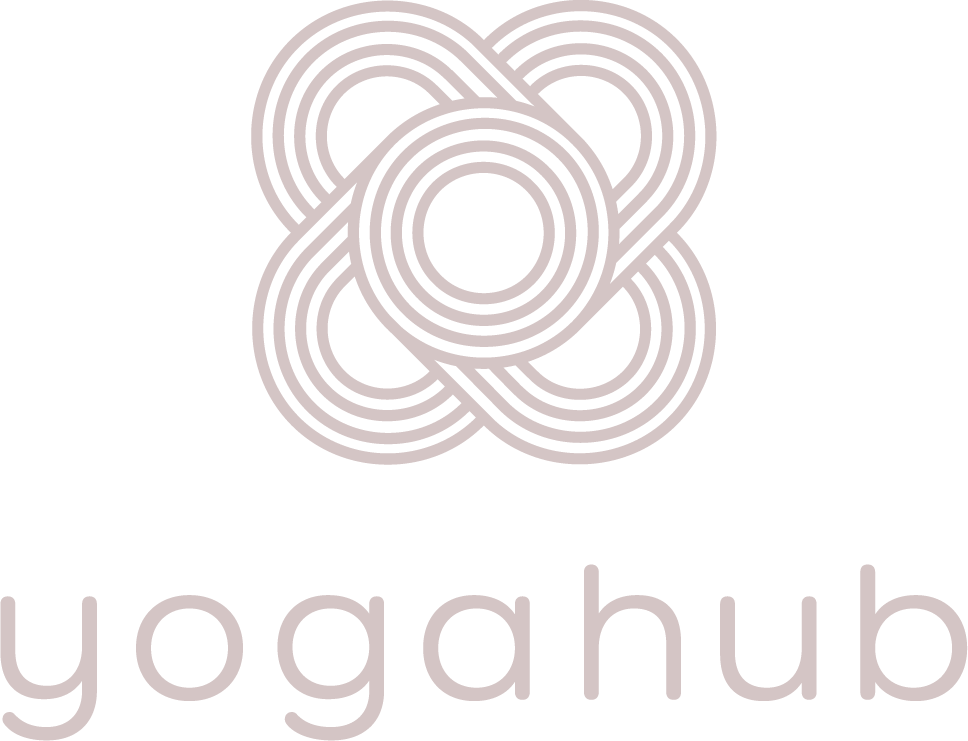This weeks guest blog is by Andrew McGonigle (Dr.Yogi) who will be coming to our Camden studio this October to run two day-long workshops for teachers and trainees, focusing on anatomy and dealing with injuries. See here for more details.
Neck tension has become a very common part of modern day life and can have a big impact on our energy levels, mental clarity and general wellbeing. Neck pain is now one of the most common musculoskeletal problems along with lower back pain. The exact cause of neck pain and tension is not always clear but here are my thoughts on why the prevalence is so high with some tips on how to potentially release tension and reduce pain.
Let’s start by quickly looking at the anatomy of the neck:
- The cervical spine is made up of 7 vertebrae that lie between the base of the skull and the top of the ribcage
- The cervical spine is the area of the spinal column that has the greatest range of movement
- This naturally makes it also the least stable part of the spine
- This area relies on ligaments and muscles for stability
- The top two vertebrae are the only adjacent vertebrae in the spinal column not to have an intervertebral disc between them
Here are some of the common causes of neck tension:
- A lack of mobility in the upper back (thoracic spine), shoulder joint and shoulder girdle can cause the neck to overcompensate and lead to strain
- Clenching our jaw when we are stressed or grinding our teeth at night can lead to jaw tension which in turn leads to neck tension and pain
- Holding the head in a forward position (commonly referred to as “text neck”) increases the force that the weight of the head puts on the cervical spine and can lead to hyper-tonicity (chronic tension) of the neck muscles to hold the head in that position
- Not regularly moving the cervical spine in its full range of controlled movement can weaken the neck musculature which the nervous system responds to by creating hyper-tonicity in order to make the area more stable
- Bearing too much weight on the head during Headstand can cause wear and tear to the top two cervical vertebrae
- Not maintaining the natural curve of the neck during Shoulderstand can strain the posterior longitudinal ligament of the cervical spine leading to instability and therefore pain and tension
- Psychologically we “carry the weight of the world on our shoulders” and tense our shoulders when we are stressed
Here are my top tips for tackling neck tension:
- Focus on increasing the full range of controlled movement of your thoracic spine, shoulder joint and shoulder girdle as part of your daily yoga practice
- Start to notice when you are clenching your jaw on and off the mat and massage this area each morning to release tension
- Become aware of your head position on and off the mat and become accustomed to correcting the alignment
- Regularly move your neck through its full range of movement in a controlled way to increase mobility and reduce hyper-tonicity
- During Shoulderstand maintain the natural curve of your neck by gently keeping your chin lifted or better still practice with your shoulders supported on a yoga blanket
- During Headstand avoid putting too much weight on the head particularly when transitioning in and out of the asana
- Avoid dropping your head back during your practice but maintain the length of your neck as you extend your neck in a controlled way
In this class for Movement For Modern Life the practice focuses improving shoulder girdle and shoulder joint mobility and releasing jaw tension. As a regular practice this can help to reduce neck tension.
https://movementformodernlife.com/yoga-class-955-release-your-neck-reduce-fatigue#_l_z7
After originally training to become a doctor, Andrew McGonigle moved away from western medicine to pursue a career as a yoga teacher, massage therapist and anatomy teacher. Andrew has been practising yoga and meditation for 15 years and teaching strong, grounding, inclusive yoga classes since 2009. Andrew combines all of his skills to teach anatomy and physiology on Yoga Teacher Training courses across the world. His teachers include Hamish Henry, Paul Dallaghan, Eileen Gauthier, Kristin Campbell, Anna Ashby and Sally Kempton. You can practise with Andrew online with Movement For Modern Life. For more information visit: www.doctor-yogi.com




